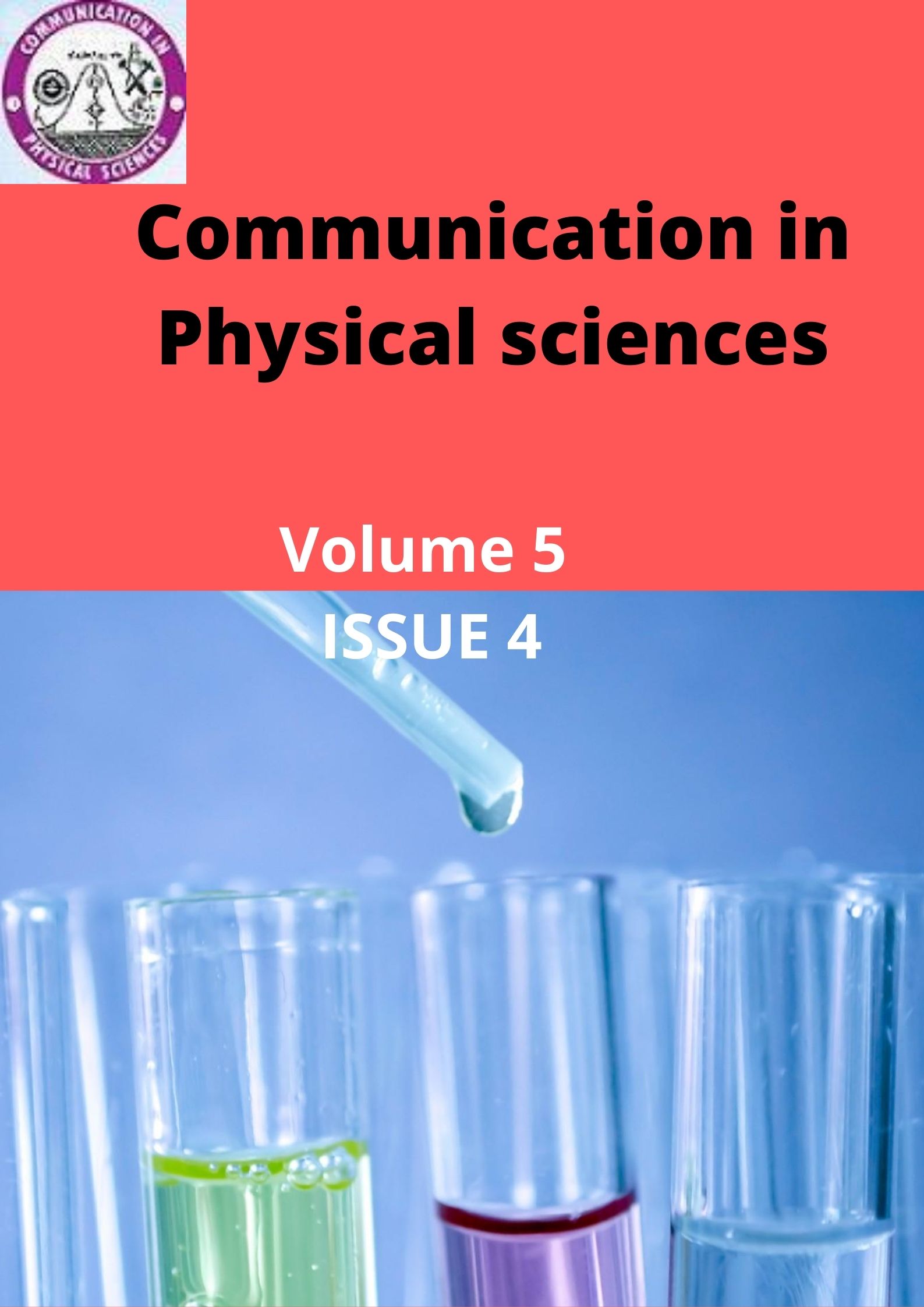Solar UV-Radiation Absorption by Stratospheric Ozone in Lagos Southwest of Nigeria
Keywords:
Absorption band, altitude, Goody model, Ozone transmittanceAbstract
Variation in ozone transmittance with altitude in the atmosphere for radiation in the 9.6mm absorption band was studied using Goody model on the data comprising of pressure and temperature at different altitudes (0-26km) for three months (including January, February and March, 2019) in Lagos, southwest of Nigeria. Computed results showed that ozone transmittance increased with altitude, except for the altitudes 8km< Z≤ 12km and 16km< Z≤ 26km for January, 8km< Z ≤ 12km, 14km< Z ≤ 16km and 22km< Z ≤ 26km for February, and 8km< Z ≤ 10km and 14km< Z ≤ 26km for March, due to absorption of solar UV- radiation by ozone (O3) indicating that stratospheric ozone was effective in the study area preventing living things from being destroyed by this radiation.
Downloads
Published
Issue
Section
Most read articles by the same author(s)
- Olusegun Sowole, Adesoji A. R. Adebambo, Radiological Assessment of Primordial Radionuclides in Crab Species from Igbokoda River in Southwest of Nigeria , Communication In Physical Sciences: Vol. 7 No. 1 (2021): VOLUME 7 ISSUE 1
- Olusegun Sowole, Funke Roseline Amodu, Absorption of Solar Infrared Radiation by Tropospheric Water Vapour in Abeokuta Southwest of Nigeria , Communication In Physical Sciences: Vol. 6 No. 1 (2020): VOLUME 6 ISSUE 1
Similar Articles
- Olusegun Sowole, Funke Roseline Amodu, Absorption of Solar Infrared Radiation by Tropospheric Water Vapour in Abeokuta Southwest of Nigeria , Communication In Physical Sciences: Vol. 6 No. 1 (2020): VOLUME 6 ISSUE 1
- Abdullahi Lawal, Musa Bello, Ahmed Musa Kona, Quasi-particle band structure and optical properties of Perylene Crystal for Solar Cell Application: A G0W0 Calculations , Communication In Physical Sciences: Vol. 8 No. 2 (2022): VOLUME 8 ISSUE 2
- Buhari Aminu Balesa, Abdullahi Lawal, Saddiq Abubakar Dalhatu, Bala Idris, Mustapha Bello, First Principles Calculations of Structural, Electronic and Optical Properties of Nitrogen-Doped Titanium Dioxide for Solar Cells Application , Communication In Physical Sciences: Vol. 7 No. 4 (2021): VOLUME 7 ISSUE 4
- Elizabeth Chinyere Nwakorongwu, Patricia Uchechi. Kanayochi-Okpechi, Ugochukwu Joseph, Effects of Annealing Temperature on the Dual Solution Synthesis and Optical Characterization of AlS: ZnS Thin Films , Communication In Physical Sciences: Vol. 11 No. 1 (2024): VOLUME 11 ISSUE 1
- B. Myek, M. L. Batari, J. O. Orijajogun, M. A. Aboki, Synthesis and Characterization of Metal Complex of an Azo Dye Based on Acid Orange 7 , Communication In Physical Sciences: Vol. 5 No. 3 (2020): VOLUME 5 ISSUE 3
- Kayode I. Ogungbemi, Analysis and Estimated Daily Dose Intake of Toxic Metals in Commonly Used Building Materials and Its Health Impacts on the Society in Lagos, Southwest Nigeria , Communication In Physical Sciences: Vol. 8 No. 3 (2022): VOLUME 8 ISSUE 3
- Richard Alexis Ukpe, Synthesis and Characterization of Calcium Oxide Nanoparticles (CaO-NPs) from Waste Oyster Shells , Communication In Physical Sciences: Vol. 10 No. 3 (2023): VOLUME 10 ISSUE 3 (2023-2024)
- Kudamnya, Ebenezer Agayina, Godwin Inieke Joshua, Ochelebe, Ibu, Okon, Emmanuel Etim , Evaluation of the Hydrochemistry and Pollution Levels in Groundwater of Njahasang, Southeast Nigeria , Communication In Physical Sciences: Vol. 12 No. 3 (2025): VOLUME 12 ISSUE 3
- Anduang Ofuo Odiongenyi, Adsorption Efficiency of Scotch Bonnet Shells as a Precursor for Calcium Oxide Nanoparticles and an Adsorbent for the Removal of Amoxicillin from Aqueous Solution , Communication In Physical Sciences: Vol. 9 No. 3 (2023): VOLUME 9 ISSUE 3
- Onyekwere O. Ikedichukwu, Oriaku I. Chijioke, Confinement Effects and Emission Spectra of〖α-Ga〗_x 〖In〗_(1-x) N Quantum Dots Nanostructure , Communication In Physical Sciences: Vol. 7 No. 3 (2021): VOLUME 7 ISSUE 3
You may also start an advanced similarity search for this article.




